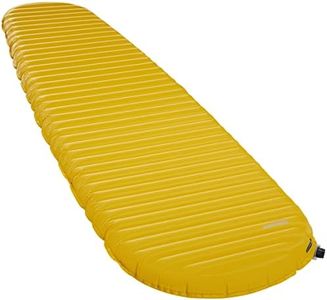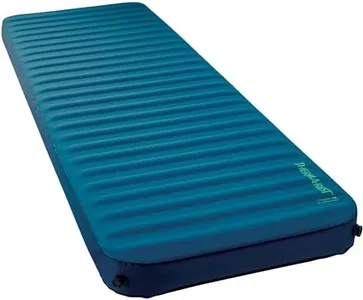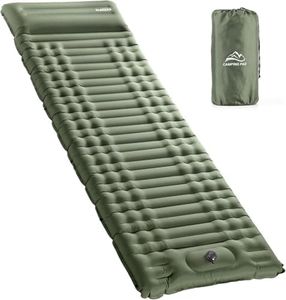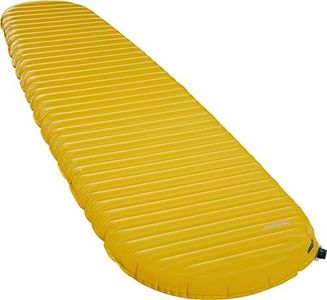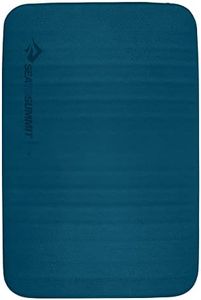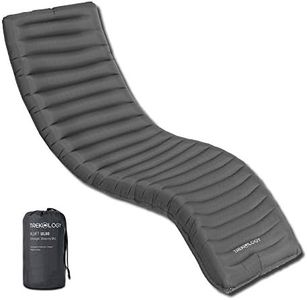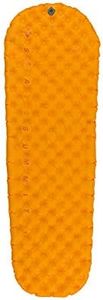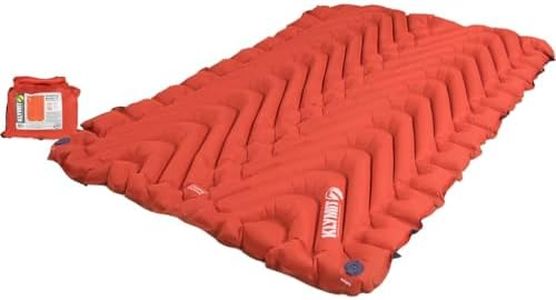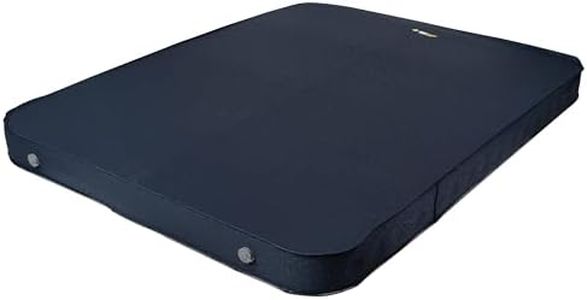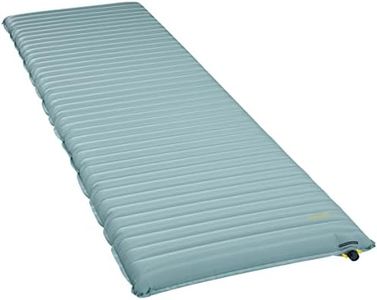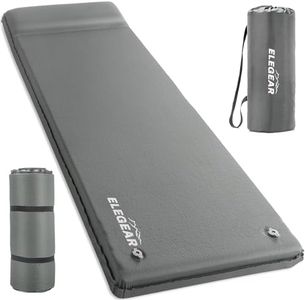We Use CookiesWe use cookies to enhance the security, performance,
functionality and for analytical and promotional activities. By continuing to browse this site you
are agreeing to our privacy policy
10 Best Inflatable Sleeping Pads
From leading brands and best sellers available on the web.Buying Guide for the Best Inflatable Sleeping Pads
Choosing an inflatable sleeping pad is all about balancing comfort, weight, packed size, and insulation for the kind of adventure you have in mind. Whether you're planning a backpacking trip, camping with the family, or just sleeping over at a friend's place, a sleeping pad can greatly improve your rest by providing cushioning and warmth. Knowing which features matter most for your specific use will help you pick the pad that best suits your needs.ThicknessThickness is the measurement of how tall the sleeping pad stands when fully inflated and is a big factor for comfort. Thicker pads, typically around 2 to 4 inches or more, provide better cushioning and can help side sleepers or those who want extra comfort sleep better by reducing pressure on hips and shoulders. Thinner pads, usually under 2 inches, can be lighter and pack smaller, but may not be as plush and are generally better for those who sleep on their backs or don’t need much padding. Consider your sleeping preferences and whether rough or uneven ground is common in your camping spots when deciding how much thickness you really need.
R-Value (Insulation)The R-value is a number that shows how well a sleeping pad resists the flow of heat; in other words, how well it insulates you from the cold ground. Pads with a low R-value, around 1 to 2, are best for summer use, while those with an R-value between 2 and 4 suit spring and fall. If you plan to camp in colder conditions or at high altitudes, look for R-values of 5 or higher. Your tolerance for cold and the weather you intend to camp in should guide your choice; picking the right R-value can make a big difference in how warm and comfortable you stay at night.
Packed Size and WeightPacked size refers to how small the pad gets when rolled or folded up, while weight describes how heavy it is to carry. If you’ll be backpacking, a lighter and more compact pad is key since you’ll have to carry it over long distances. For car camping or trips where carrying distance is short, you can prioritize comfort and insulation over weight and packed size. Think about how much space you have in your backpack and how far you need to walk to set up camp when balancing between compactness and comfort.
Inflation MethodInflation method is about how you pump air into the pad. Some pads are self-inflating, meaning they fill with air automatically to a certain extent, and you can finish with a few breaths. Others require you to inflate by mouth, with a stuff sack, or a small pump. Self-inflating pads are super convenient but may weigh more, while manually inflated pads take a bit more effort but can be lighter and pack smaller. Consider how much effort you'd like to use at camp, and also if you want to avoid moisture from your breath getting inside the pad, which can sometimes lead to mildew.
Surface FabricThe surface fabric refers to the material used on the top and bottom of the pad. Some have a soft, quiet finish, while others are more rugged and durable. Softer fabrics can feel nicer against your skin, especially if you sleep without a sleeping bag, but rougher, tougher fabrics are better on rocky or rough ground and will resist punctures and wear. Think about your typical camping environments and whether you prioritize comfort or rugged durability when looking at surface materials.
